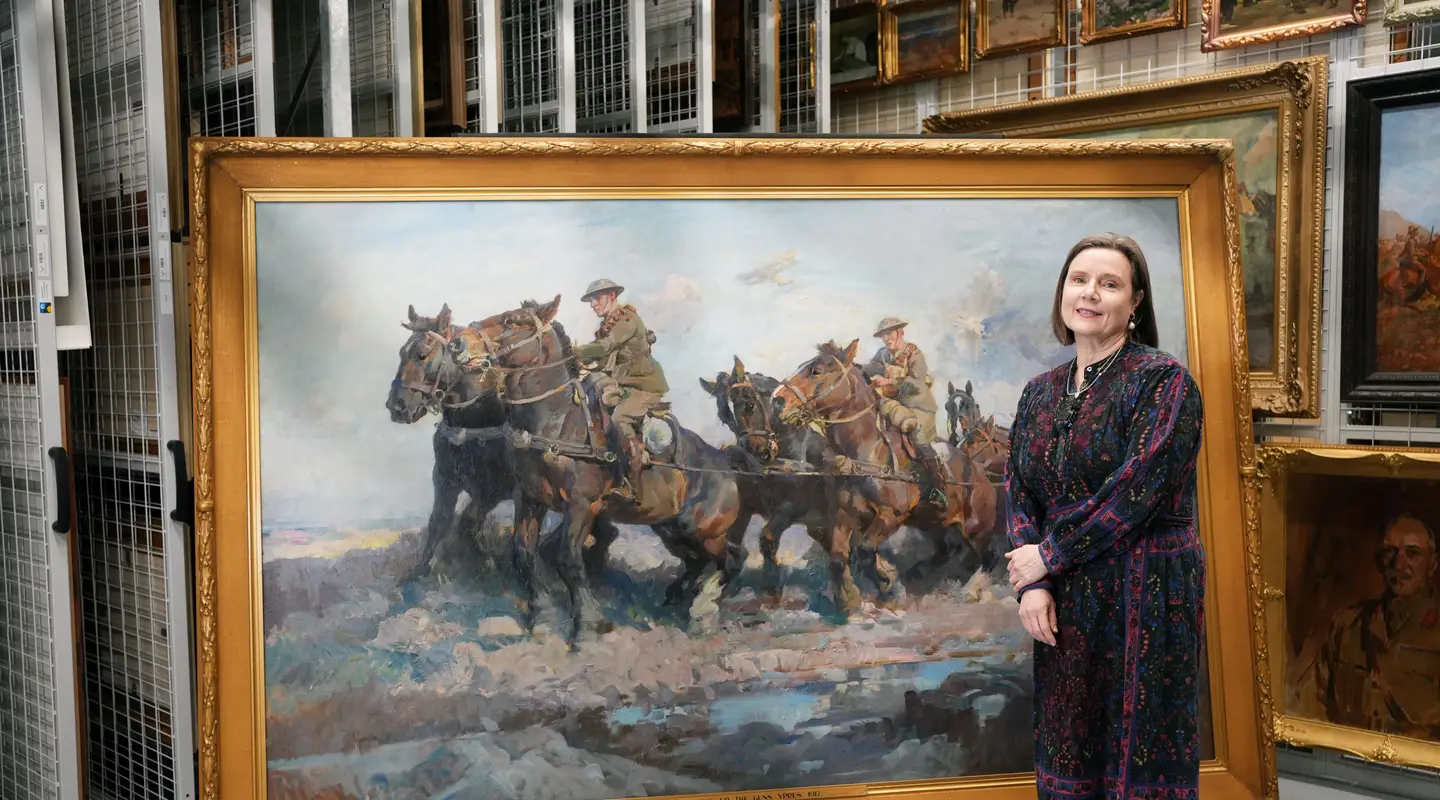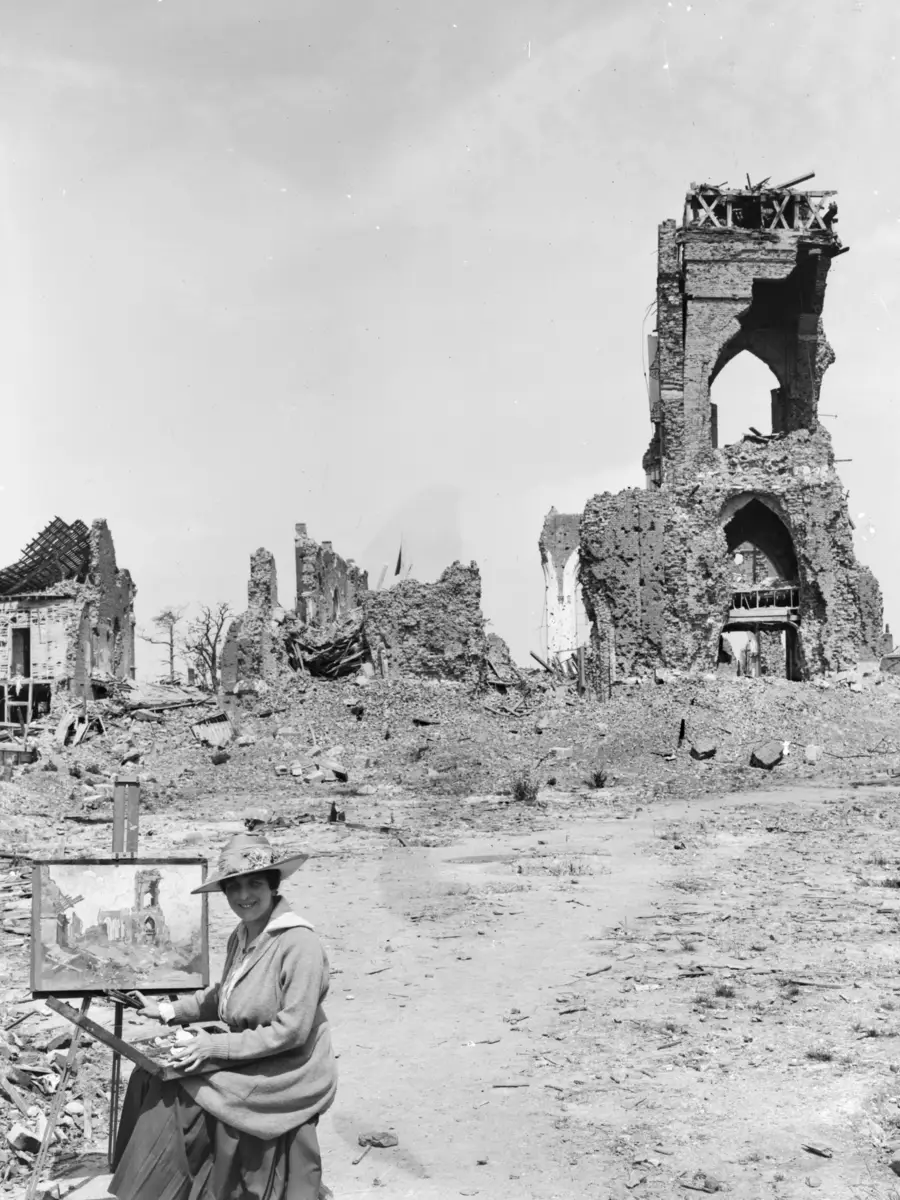Harold Septimus Power’s powerful First World War painting Bringing up the Guns captures the vital role played by horses and drivers at Ypres in 1917.
Curator of Art Dr Lara Nicholls explores Harold Septimus Power’s Bringing up the Guns, a vivid depiction of the Third Battle of Ypres.
With his skill as an animal painter, Power captured the immense physical strain of horses and men hauling heavy artillery through the mud. His bravura style conveys the energy of battle and the essential role of war horses, reminding us that the First World War could not have been fought without them.
My name is Lara Nicholls and I am a curator of art at the Australian War Memorial.
And today I’m standing in front of a really important First World War painting, by the Australian artist Harold Septimus Power.
It’s called Bringing up the Guns and it depicts the Third Battle of Ypres in Belgium in 1917.
In this particular work he has focused on the soldiers who are actually called drivers and these are the three men you see here, who are driving the horse train to bring up the gun, bring up munitions, to take them into battle.
And Harold Septimus Power, as one of the first official war artists, was a trained animal painter.
He really was the perfect artist to depict the war horses in the First World War.
They were a significant component of military technology.
In fact, we didn’t begin to use mechanized vehicles to bring up guns until the 1930's.
This horse train is actually pulling up a particular type of artillery, which is called the 18-pounder.
They were very very heavy and to drag one through the mud would – you can see it’s taking the work of six horses to do that.
We can see that they’re straining through the mud as well.
In fact, two men down here are trying to help the horses along, push them through this muddy terrain.
The horses would have a strong sense of fear in this battle field.
We can see the burst shell in the sky, the overhead aircraft here, surveilling and potentially bombarding the battlefield.
We have a really strong sense of the experience of not just the men, but the horses.
He’s done a really splendid job with the power of the this and the energy of this composition, and that harness line pulls you through the composition and it creates this sense of moving forward.
But we can see that the horses are straining against that.
Septimus Power paints in what we call a bravura style.
He uses a very wide brush loaded with a lot of paint which allows him to get this very energetic surface layer.
Septimus Power was really a master of that style, and he used it to his full powers in these major military paintings that he painted for the Australian War Memorial.
Without a doubt, World War One would have come to a standstill if the divisions did not have the labour of the war house.
In fact, without Septimus Power’s work in the collection, we probably wouldn’t be able to emphasise that important factor because that’s really what he focused on.


